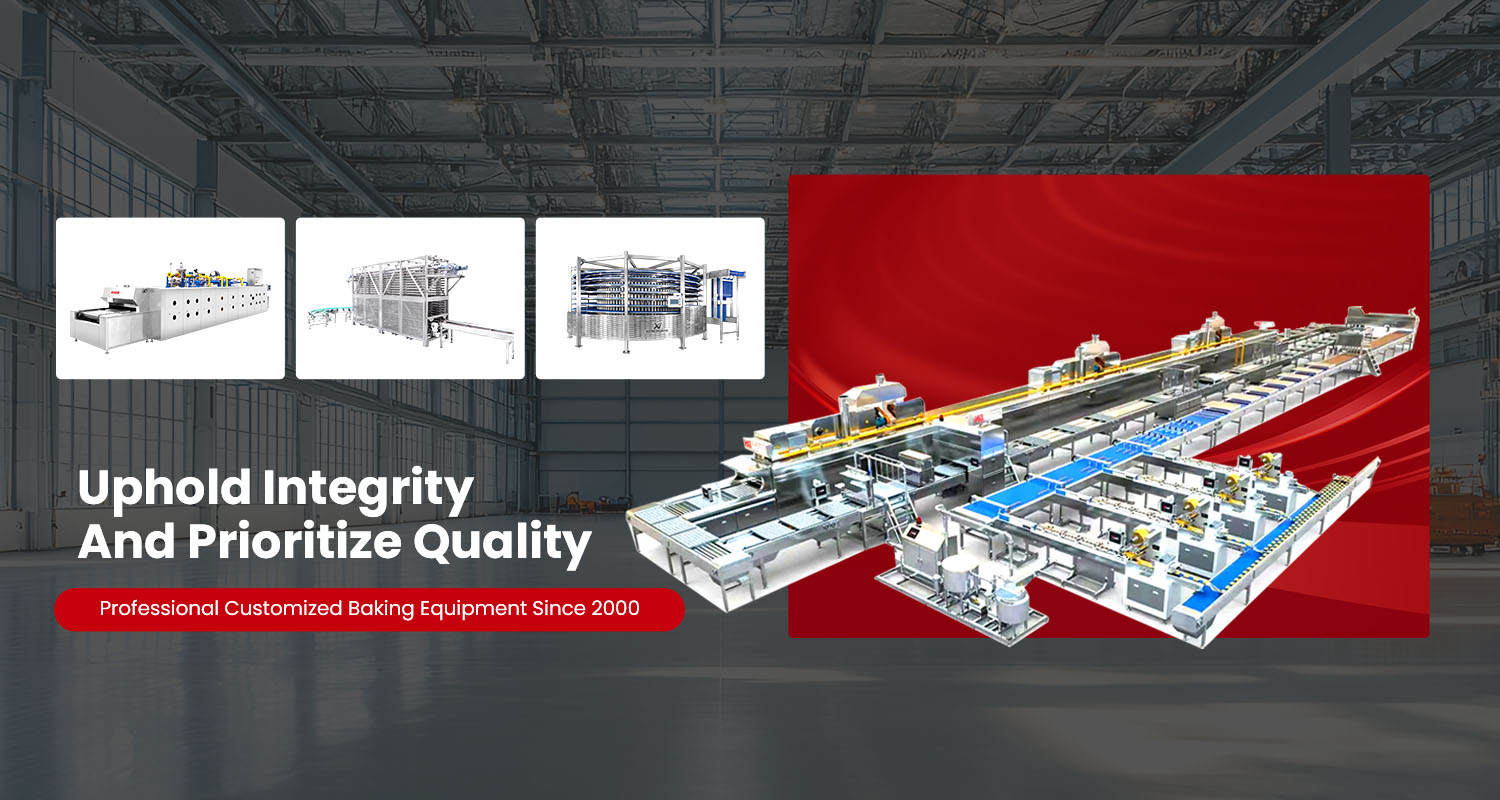How Efficient Is a Spiral Cooling Tower for Baked Goods?
In the baking and transport industry, controlling product temperature is critical. After baking, goods often carry residual heat and moisture. If transported too soon or cooled inadequately, they may suffer condensation, sogginess, or quality degradation. A Spiral Cooling Tower (also called a spiral cooler or spiral cooling conveyor) is a widely adopted technology to manage this cooling phase in a compact, continuous manner.
This article explores how efficient spiral cooling towers are for baked goods in a transport or distribution context and offers practical considerations for adoption. We also briefly introduce KC-SMART’s spiral cooling solution, as one possible option on the market (from jm-kc.com).
The Role of Cooling in Baked-Goods Logistics
Before diving into spiral cooling towers themselves, let’s review why controlled cooling is essential in baked-goods transport:
Moisture migration & condensation control Hot goods exposed to ambient or chilled air may cause humidity to condense on surfaces or packaging. A proper cooling path helps prevent moisture accumulation.
Product integrity and shelf life Rapid, even cooling reduces internal stress (reducing cracking or structural collapse) and inhibits microbial growth that thrives in warm, moist conditions.
Energy and space constraints Downstream transport or cold storage capacity is expensive. Efficient in-line cooling reduces reliance on downstream chillers and may reduce dwell time in cold rooms.
Thus, cooling is not just a process step — it’s integral to product quality, cost, and logistics efficiency.
What Is a Spiral Cooling Tower?
A spiral cooling tower (or spiral cooler) is essentially a vertical or spiral conveyor that moves baked goods (on trays, belts, or carriers) upward or downward in a helix, exposing them to ambient or forced cooling air. The geometry allows long travel distance in a compact footprint.
Key features:
The spiral path gives a long travel length without requiring a long linear conveyor.
Airflow (natural or forced) is directed through the spiral to remove heat.
Multi-level designs may allow staged airflow or temperature control.
Compact vertical or cylindrical footprint saves floor space compared to long flat cooling conveyors.
On jm-kc.com, the “Spiral Cooling Tower” product is one of their featured offerings under KC-SMART’s lineup of bakery equipment.
Efficiency Metrics for Spiral Cooling Towers
When assessing cooling efficiency, here are the key metrics:
Cooling rate (°C per minute or per meter of conveyor)
Heat transfer coefficient (W/m²·K)
Air turnover or airflow volume (m³/h)
Energy consumption (fan power, auxiliary systems)
Throughput (kg/h or tray per hour)
Uniformity (variation across units)
Footprint per unit throughput
Let’s examine how spiral coolers perform on these:
1. Cooling rate & throughput
Because of the long effective path inside a compact volume, spiral cooling towers can provide gradual, controlled cooling. Goods close to the center or inner spiral loops may cool more slowly, but with proper airflow design, uniform cooling can be achieved.
In many bakery installations, spiral coolers are capable of cooling from near-oven exit temperatures down to ambient or target transport temperature within the conveyor path, eliminating the need for extra holding time in ambient rooms.
2. Airflow & heat transfer
Efficiency depends heavily on the fan / blower design, air direction (counterflow, crossflow), and the spacing between trays or belts. Adequate air volume per unit area ensures high convective heat transfer. Well-designed spiral coolers can achieve high heat removal per unit of fan energy.
3. Energy usage
Because the cooler is integrated inline, the energy penalty is primarily fans (and any motor drives). Compared to cooling via large cold rooms or refrigerated trucks, the spiral cooler often offers lower incremental energy cost for the same heat load, especially when properly sized and insulated.
4. Uniformity & quality retention
A good spiral cooling tower provides uniform cooling so that all pieces, inner and outer, cool at similar rates with minimal variation in moisture or texture. That consistency preserves product quality (crust crispness, internal crumb structure).
5. Footprint & capital investment
The spiral design allows much longer travel in a small floor footprint, which is advantageous in tight bakery or packaging areas. The capital outlay can be balanced by space savings and reduced downstream cooling capacity requirements.
In summary, a well-designed spiral cooling tower can be exceptionally efficient in cooling baked goods prior to transport, combining quick cooling, good product quality, moderate energy usage, and compact layout.
Challenges & Best Practices
However, efficiency is not automatic. Key challenges and recommendations:
Air path design and pressure drop Poor ducting or blockage can reduce airflow and cooling efficiency. Ensure air channels remain unobstructed.
Layer spacing and tray design If trays or carriers are too tightly spaced, air cannot circulate effectively; too loose, and capacity is wasted.
Staging airflow In some designs, airflow can be staged or zoned (stronger cooling initially, lighter later) to avoid overcooling or surface stress.
Insulation and leakage control Avoid unwanted air infiltration or heat gain from surroundings by insulating and sealing surfaces.
Control systems Temperature and humidity sensors, variable fan speeds, and feedback control can optimize performance under varying loads.
Maintenance and cleaning Bakery environments produce dust and crumbs. Regular cleaning of ducting, filter screens, fans, and coils is essential.
Why Consider KC-SMART’s Spiral Cooling Tower?
When selecting a supplier, you want reliability, customization, and after-sales support. KC-SMART (on jm-kc.com) presents itself as a high-tech enterprise in the bakery machinery space, providing not only spiral cooling towers but full one-stop solutions (design, manufacture, installation, after-sales) for baking and food customers.
Some advantages of their spiral cooling offerings might include:
Tailored solutions: KC-SMART offers Spiral Conveyor Cooling Towers (and Vertical Cooling Towers) to adapt to various throughput, footprint, and layout constraints.
Experience in bakery equipment: Their equipment portfolio is bakery-oriented (dough systems, fermenters, ovens, etc.), so the cooling tower can integrate seamlessly.
Support & service: As a manufacturer that handles design, installation, commissioning, and maintenance, they may reduce integration risk.
While users should conduct due diligence (e.g. performance testing, references, local support), KC-SMART’s spiral cooling tower is worth evaluating when designing a cooling line for baked goods.
Summary
In the baked-goods transport industry, a spiral cooling tower can deliver high efficiency: rapid but controlled cooling, uniform product quality, compact layout, and favorable energy metrics—especially compared to extended ambient cooling or cold rooms. The key lies not only in the spiral geometry but in airflow design, control systems, and proper integration.






